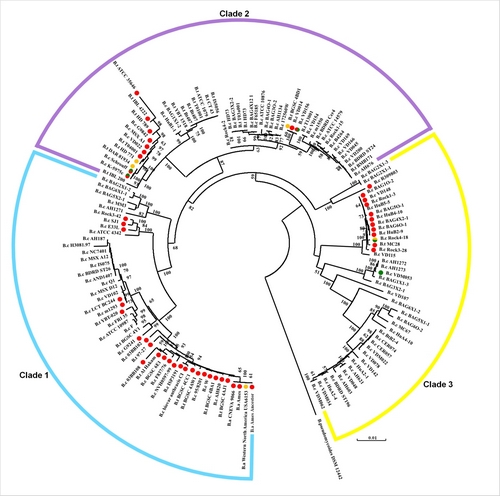The molecular basis of resistance has been extensively studied and consists of a pool of genes called Antibiotic Resistance Genes (ARGs). In pathogens, most of these ARGs can be easily transferred between species through a process called Horizontal Gene Transfer (HGT), which leads to the concept that ARGs can be referred as a common gene pool in which pathogens can pick up resistance determinant they need for survival: the resistome. The resistome concept has been separated between the acquired resistome (ARGs which are usually transferred between bacterial species by HGT) and the instrinsic resistome (ARGs which are naturally present in some bacteria and not subject to HGT).
A team of researchers directed by Dr. FENG Jie at the Institute of Microbiology of Chinese Academy of Sciences (IMCAS), recently described two new ARGs providing resistance to the macrolide class of antibiotics in the Bacillus cereus group of bacteria. The B. cereus group includes the highly pathogenic B. anthracis species and the insect pathogen B. thuringiensis, as well as environmental bacteria such as B. cereus and B. mycoides. The activity of these two ARGs was first predicted computationally, and then verified experimentally.
Bioinformatics analysis revealed that one of these ARGs belong to the intrinsic resistome, called Mph Cluster A, while the other one belongs to the acquired resistome, called Mph Cluster B. Surprisingly, while Mph Cluster A shows most of the classical intrinsic properties (located in a conserved region of the bacterial chromosome, evolutionary ancient), it also shows clear evidence of HGT.
Bacillus strains are grouped into three high-level phylogenetic clades one to three. The presence of the same Mph gene in different phylogenetic clades (groups with the same ancestor) which are distant to each other is considered as evidence of HGT. Moreover, observations suggest that Mph Cluster A is exchanged among bacteria by the mean of homologous recombination, a process which has never been described for ARG transfer.
This study expanded the macrolide resistome with two new macrolide phosphotransferases, and contributed to a better understanding of the B. cereus resistome. It also highlighted unappreciated properties of intrinsic resistance genes.
The study entitled "Functional characterization and phylogenetic analysis of acquired and intrinsic macrolide phosphotransferases in theBacillus cereusgroup" was published in Environmental Microbiology.
The work was supported by grants from the National Natural Science Foundation of China, the National High-Technology Research and Development Program of China and the Knowledge Innovation Program of the Chinese Academy of Sciences.

Figure: Phylogenetic distribution of Mph Cluster A (intrinsic ARG) and Mph Cluster B (acquired ARG) in the B. cereus group of bacteria (Image by IMCAS)
